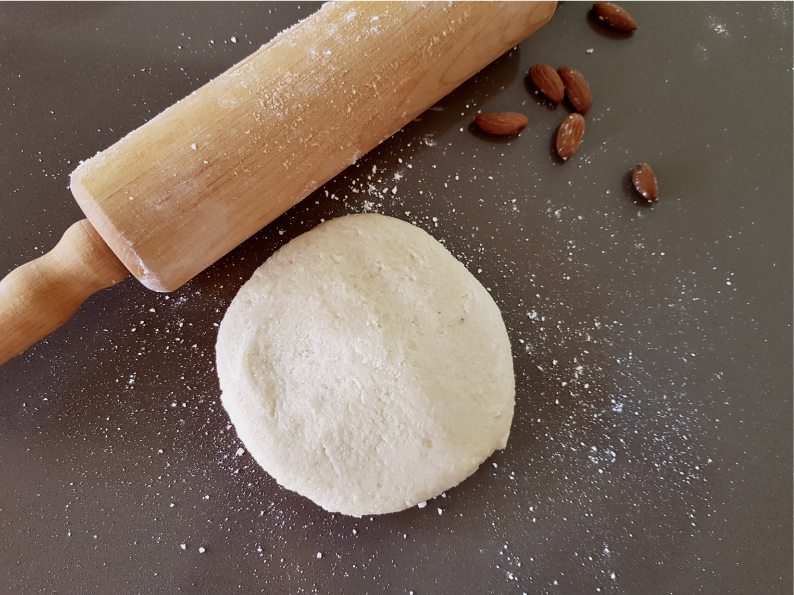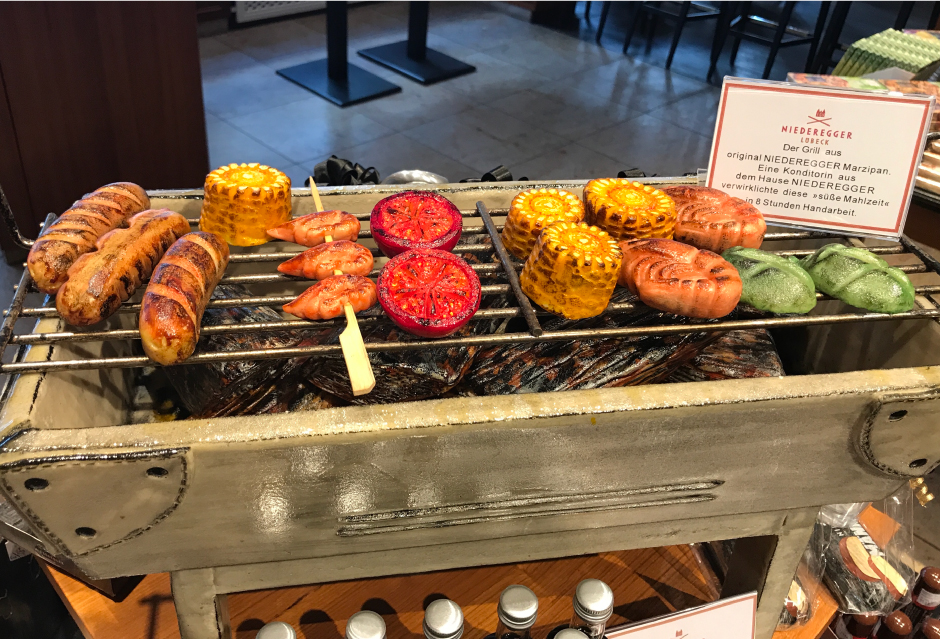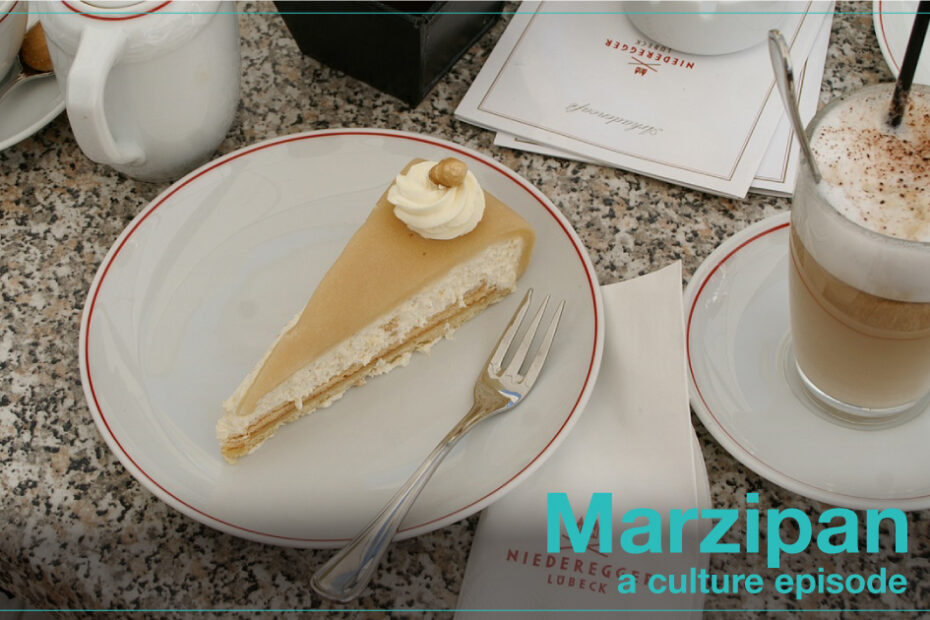Welcome to another culture episode of MoinMarc, where you can hear about daily life in Germany, while listening to the language and learn new words along the way.
Following our episode in Lübeck, we couldn’t miss the opportunity to tell you about the much loved sweet treat. Marzipan has been made in Lübeck since 1806 and has a long history with royalty. Find our recipe to make Marzipan here.
See the transcript below in both German and English, to follow along with the audio.
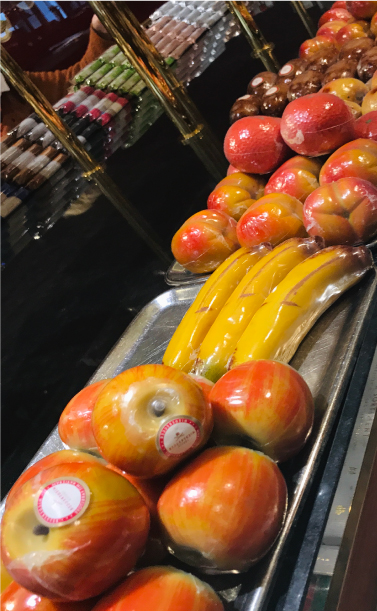
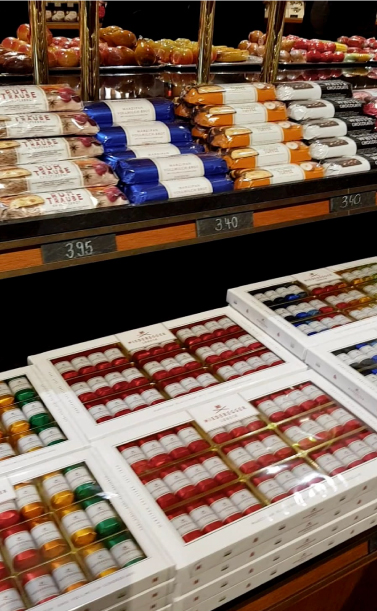
Podcast Transcription


Marzipan kam erstmals im 11. Jahrhundert aus dem Nahen Osten nach Deutschland. Es wurde zusammen mit Gewürzen, Seide und Aprikosen gehandelt. Marzipan ist eine Mischung aus Mandeln, Zucker und Wasser. In Deutschland wurde Marzipan zuerst in der kleinen Stadt Lübeck hergestellt. Lübecker Marzipan unterscheidet sich von anderem Marzipan: Es enthält weniger Zucker, dafür aber mehr Mandeln. Um 1600 stand Marzipan immer auf den Tischen der Könige und Adligen. Die Gäste sahen dann Äpfel oder anderes Obst auf dem Tisch stehen. Dieses Obst war aber nicht echt, sondern aus Marzipan geformt.
In Lübeck gibt es nicht nur einen Marzipanhersteller. Der berühmteste ist aber Niederegger. In der Lübecker Innenstadt befindet sich das Café Niederegger. Es liegt am Marktplatz, direkt am Rathaus. Hier gibt es auch ein Museum, in dem gezeigt wird, wie Marzipan hergestellt wird. Außerdem kann man sehen, wie aus Marzipan beeindruckende Figuren geformt werden. Als ich das letzte Mal hier war, habe ich zum Beispiel einen Grill mit Tomaten und Würstchen gesehen. Alles wurde aus Marzipan hergestellt und sah sehr realistisch aus.
Marzipan ist in Deutschland sehr beliebt. Vor allem zu Weihnachten ist Marzipan überall: in Stollen, in Keksen oder einfach in Marzipankartoffeln. Ein Klassiker ist das “Glücksschwein”. Das ist ein kleines Schwein aus Marzipan. Manche Deutsche verschenken das Glücksschwein als Glücksbringer für das neue Jahr.

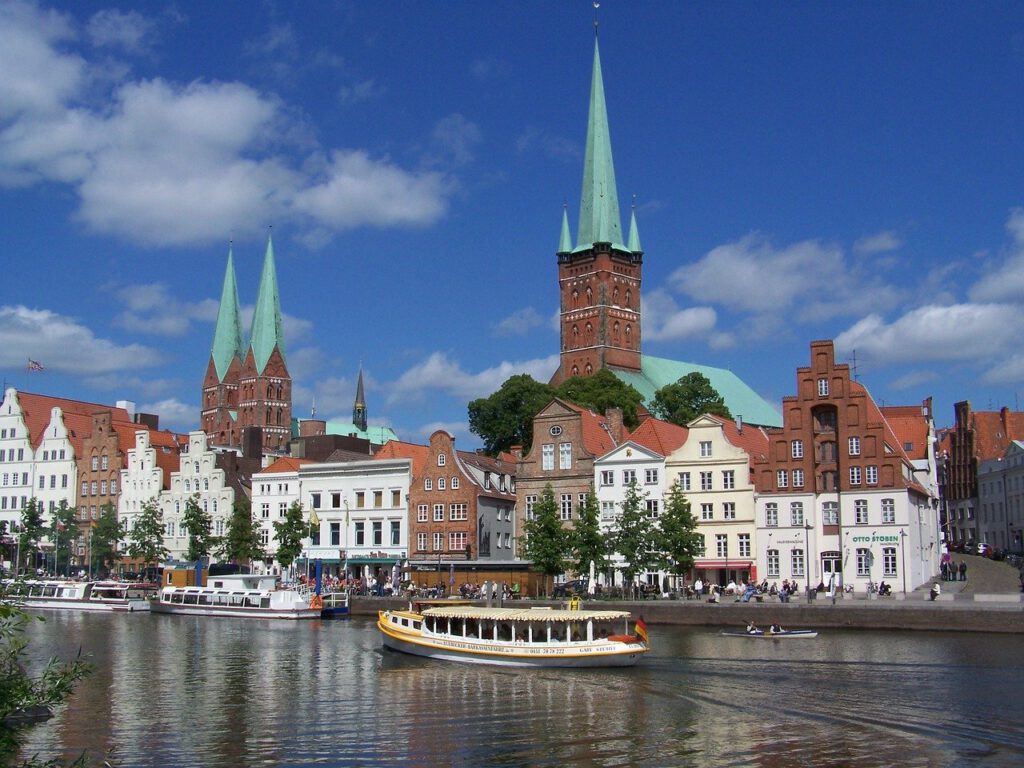
Podcast Translation


Marzipan first came to Germany from the Middle East in the 11th century. It was traded together with spices, silk and apricots. Marzipan is a mixture of almonds, sugar and water. In Germany, marzipan was first produced in the small town of Lübeck. Lübeck marzipan is different from other marzipan: it contains less sugar, but more almonds. Around 1600, marzipan was always on the tables of kings and nobles. Guests would see apples or other fruit on the table. This fruit, however, was not real, but formed from marzipan.
In Lübeck there is not only one marzipan manufacturer. But the most famous one is Niederegger. Café Niederegger is located in the center of Lübeck. It is located on the market square, right next to the town hall. There is also a museum here, where it is shown how marzipan is made. You can also see how impressive figures are formed from marzipan. The last time I was here, for example, I saw a grill with tomatoes and sausages. Everything was made of marzipan and looked very realistic.
Marzipan is very popular in Germany. Especially at Christmas, marzipan is everywhere: in Stollen, in cookies or simply in marzipan potatoes. A classic is the “lucky pig.” This is a small pig made of marzipan. Some Germans give away the lucky pig as a lucky charm for the new year.

